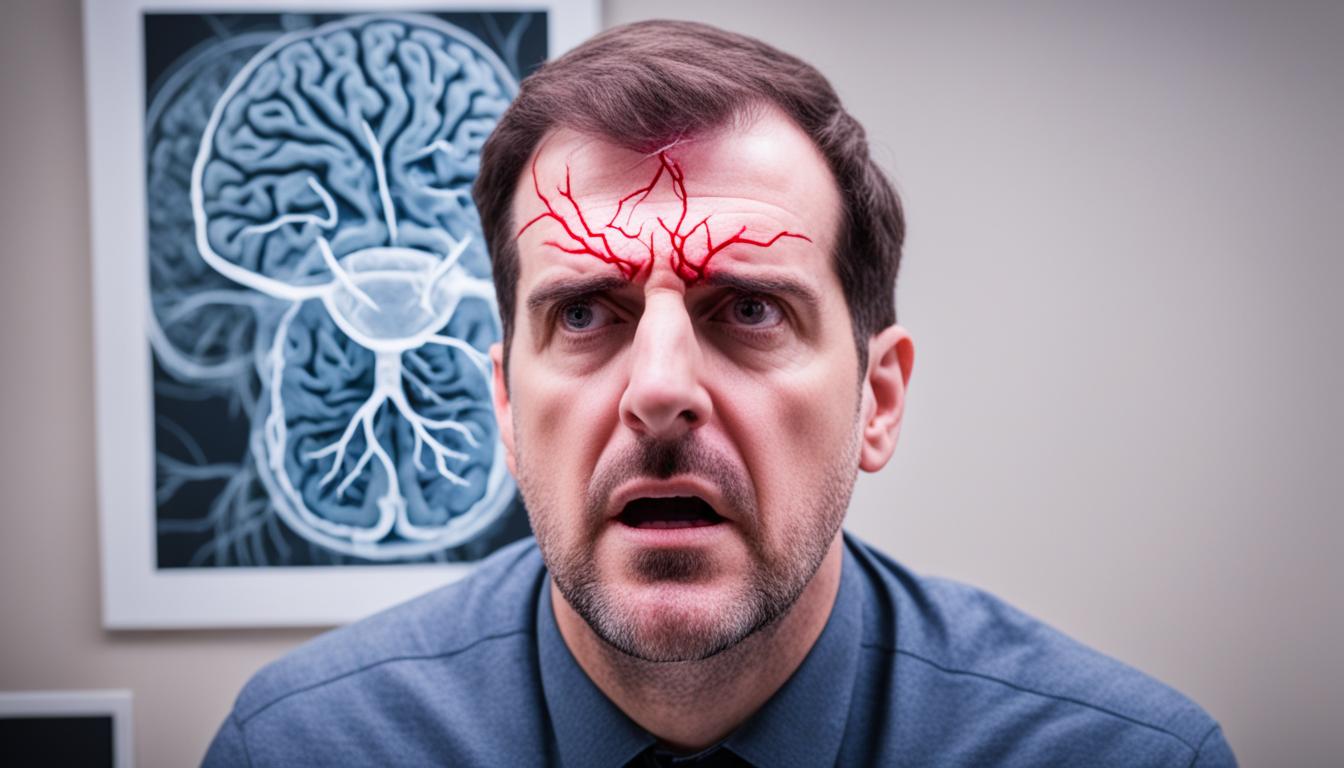A Transient Ischemic Attack (TIA), also known as a mini-stroke, is a temporary issue in the brain. It’s caused by a brief drop in blood flow. This drop leaves a person at higher risk of a full stroke later on. The effects of TIA don’t last long, usually under an hour. But, they should be seen as a red flag for potential stroke risk and need quick medical care.
Key Takeaways:
- TIA is a temporary episode of neurological dysfunction caused by a temporary decrease in blood flow to the brain.
- TIA is a warning sign of an increased risk of a future ischemic stroke.
- The symptoms of TIA typically last for a short time and then resolve completely.
- TIAs indicate an underlying vascular problem that requires prompt medical attention.
- Proper diagnosis and treatment are crucial to prevent future strokes.
Risk Factors and Prevention of TIA
Transient Ischemic Attack (TIA) acts like a warning for future, more severe strokes. Recognizing and managing the risk factors for TIA are key. This helps reduce the chance of facing a TIA.
High blood pressure (hypertension) stands as one major risk for TIAs. It can harden and narrow blood vessels, raising stroke risk. Keeping blood pressure in check with lifestyle changes and medicine is vital.
Diabetes also increases the likelihood of TIA. It makes heart and blood vessel diseases more likely, raising TIA risk. Managing diabetes well with lifestyle and medicine lowers this risk.
Smoking damages blood vessels, increasing TIA risk. The harmful chemicals in cigarettes can lead to blood clots. Stopping smoking is critical for TIA prevention and overall heart health.
High LDL cholesterol levels can lead to vessel blockage by creating plaques. This condition, atherosclerosis, can increase TIA risk. Eating well, exercising, and taking medication can keep cholesterol levels in check.
Healthy lifestyle choices can greatly lower the chance of TIA. This means staying active, keeping a healthy weight, and eating a diet low in bad fats. Include plenty of fruits, vegetables, and whole grains in your meals.
In certain cases, doctors may recommend medicines to prevent TIA, especially for those at a higher risk. These drugs can include blood thinners or those to manage other health conditions.
New developments in medicine, like stem cell therapy, offer hope for TIA prevention. Stem cell therapy may repair damaged vessels and improve blood flow in the brain. But, research is ongoing to understand its full benefits and risks.
| TIA Risk Factors | Prevention Measures |
|---|---|
| High blood pressure (hypertension) | – Regular blood pressure monitoring – Lifestyle changes (exercise, healthy diet) – Medication as prescribed by a healthcare professional |
| Diabetes | – Proper management of diabetes through medication, diet, and exercise |
| Smoking | – Quit smoking |
| High cholesterol levels | – Maintain healthy cholesterol levels through diet, exercise, and medication |
| Lifestyle changes | – Regular physical activity – Healthy weight maintenance – Balanced diet |
| Medication | – Taking prescribed medications as directed by a healthcare professional |
Conclusion
TIA, known as a mini-stroke, happens when there’s a short drop in brain blood flow. It’s a sign that you may experience a stroke in the future. Learning the signs, causes, and how to lower the risk of TIA is key.
Risk factors for TIA include high blood pressure, smoking, and high cholesterol. By changing your lifestyle, taking medications, and seeing your doctor often, you can lower this risk. It’s essential to focus on avoiding TIA and catching it early to prevent future strokes.
Recently, stem cell therapy has become a hopeful treatment for strokes, including TIA. Studies have shown it can repair brain damage and boost neurological health. As research in stem cells progresses, more options for fighting off TIA may become available.
To wrap up, knowing about TIA, living healthily, and getting timely medical help can reduce your TIA risk. Detecting it early, treating it quickly, and managing your health are crucial steps. With the potential of stem cell therapy, TIA treatment may get even better, offering a brighter future for those affected.

